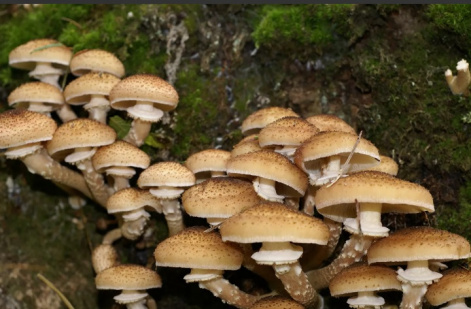The gene of the Siberian mushroom "predator" has been deciphered
16 September 2019 г.

Many species of honey mushrooms provoke the death of woody plants and grow to gigantic proportions. For example, A. solidipes mycelium, found in the Malheur National Wildlife Refuge in Oregon USA, covers an area of more than 880 hectares. A “harmless” and seemingly small mushroom can become a pathogen and affect trees around the world.
Despite the widespread prevalence of honey mushrooms, their mitochondrial genomes (mitogenomes) have not been read to date. "We completely sequenced, assembled and annotated the circular mitogenomes of four types of honey mushrooms: A. borealis, A. gallica, A. sinapina and A. solidipes, as well as the nuclear genome A. borealis," says Konstantin Krutovsky, head of the research group and Laboratory of forest genomics of the Siberian Federal University.
Owing to the study, biologists and geneticists will be able to better understand the interaction of mitochondria (mitochondrion is a intracellular power plant of all higher organisms from fungi to humans) with a nuclear genome, as well as to study their functioning and evolution. This will aid in conducting a comparative analysis of different types of mushrooms and protecting forests.
“By comparing the genomes of honey mushrooms which differ in pathogenicity, we hope to better understand the mechanisms of their harmful effects on trees and develop more effective methods of protecting forests. In fact, we can “reprogram” the mitogenomes and genomes of fungi by changing their pathogenicity, but to do this it is necessary to better know their functioning, gene expression, pathogenicity mechanisms and interaction with a plant in the host-parasite system, especially in the context of environmental stresses, such as droughts and epizootic outbreaks, and global climate change, ” says Krutovsky.
One of the authors of the study, head of the laboratory of forest cultures, mycology and phytopathology and deputy director of the V.N.Sukachev Institute of Forest KSC SB RAS, Igor Pavlov notes that pathological examination of forests of the Krasnoyarsk Region shows the presence of root rot even in apparently healthy coniferous and deciduous trees.
“At present, it is the northern honey mushroom that causes massive drying out of conifers. What are the reasons of such behavior, apart from climate change, is to be found out,” emphasizes Pavlov.
Source: RIA Novosti
Share:
